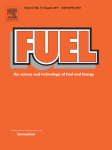



The Department of Chemical Engineering at NTNU is well known for using the MATLAB CAPE-OPEN Unit Operation but had so far mostly published on using it for modeling membrane contactors (2018a, 2018b, 2019). The same group applies here the solution in another context and takes here once more the opportunity offered by the flexibility of the MATLAB CAPE-OPEN Unit Operation.
It shows to CO-LaN that the technology provided by CAPE-OPEN is mature.
